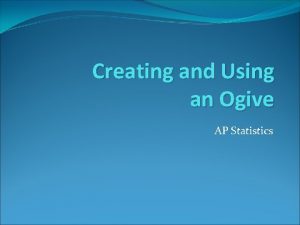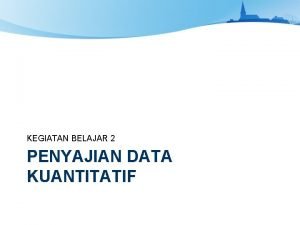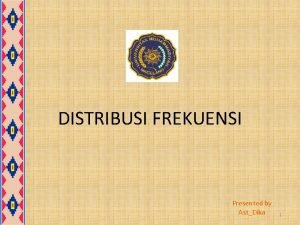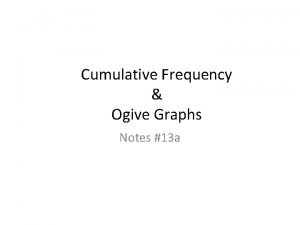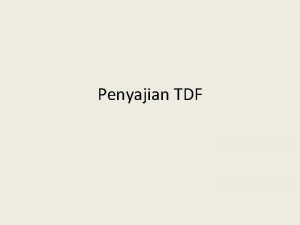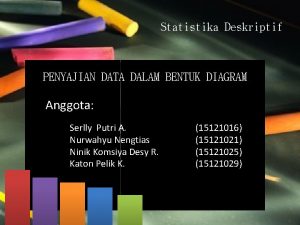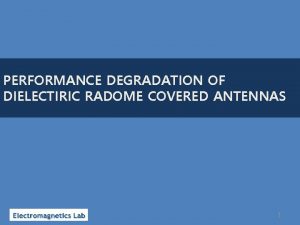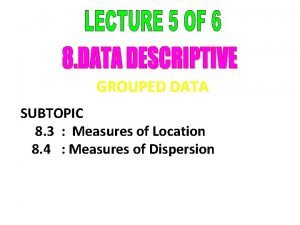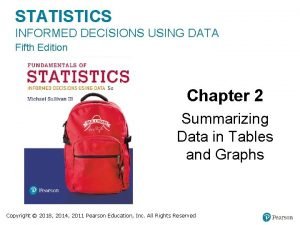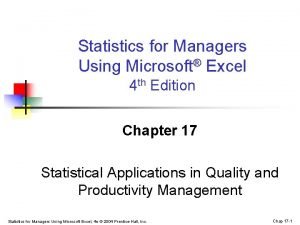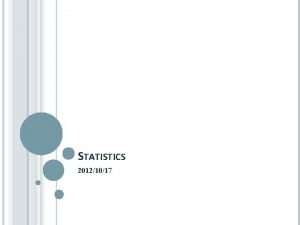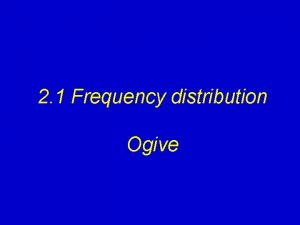Creating and Using an Ogive AP Statistics Definition













- Slides: 13

Creating and Using an Ogive AP Statistics

Definition �An ogive is a graph that represents cumulative frequencies or cumulative relative frequencies of a data set. �It is constructed from a cumulative frequency histogram or from a cumulative relative frequency histogram. �For our purposes, we will create just the cumulative relative frequency ogive, as it enables us to estimate percentiles.

Percentiles �In statistics, a percentile is the value of a variable below which a certain percent of observations fall. For example, the 20 th percentile is the value (or score) below which 20 percent of the observations may be found. �The term percentile and the related term percentile rank are often used in the reporting of scores from norm-referenced tests. For example, if a score is in the 86 th percentile, it is higher than 85% of the other scores. �The median of a data set is also known as the 50 th percentile.

Constructing an Ogive � Here is the Frequency Distribution for the attendance (in thousands) at Super Bowl Data for games I to XXXVI (1 to 36): Class Limits Class Boundaries Freq. 62 -69 61. 5 -69. 5 3 . 08 70 -77 69. 5 -77. 5 19 . 53 78 -85 77. 5 -85. 5 8 . 22 86 -93 85. 5 -93. 5 1 . 03 94 -101 93. 5 -101. 5 2 . 06 102 -109 101. 5 -109. 5 3 . 08 � Notice the two extra columns. Relative Cumulative Frequency Cumulative Relative Frequency

Cumulative Values �Cumulative Frequencies and Cumulative Relative Frequencies represent “running totals” for the two columns which precede them. Below is a “complete” frequency distribution.

Step 1: Draw a Cumulative Relative Frequency Histogram.

Step 2: Draw the Ogive Curve

Step 3: Remove the Histogram (optional)

Step 4: Estimate Percentiles About 77, 000 people.

Estimate the 80 th Percentile About 88, 500 people.

What percentile would represent 70, 000 in attendance? About the 15 th Percentile.

Interquartile Range (IQR) �Interquartile Range is a measure of spread. It is a number summary that indicates the spread of the middle 50% of the data after it is rank-ordered. �To calculate IQR, find the 75 th percentile of the data set, and subtract from it the value of the 25 th percentile. The resulting value is the IQR. �Later, we will call the 75 th percentile “Q 3”. Similarly, we will call the 25 th percentile “Q 1”. �Thus, IQR = Q 3 – Q 1.

Homework �Worksheet on Ogives.
 What is an ogive
What is an ogive Ogive and frequency polygon
Ogive and frequency polygon Contoh batas kelas semu
Contoh batas kelas semu Contoh ogive
Contoh ogive Frekans tablosu oluşturma
Frekans tablosu oluşturma Ogive graphs
Ogive graphs Diagram batang berimpit disebut
Diagram batang berimpit disebut Contoh tabel diagram batang
Contoh tabel diagram batang Boresight 뜻
Boresight 뜻 Left skewed ogive
Left skewed ogive Introduction to statistics what is statistics
Introduction to statistics what is statistics Statistics informed decisions using data 5th edition pdf
Statistics informed decisions using data 5th edition pdf Statistics for managers using ms excel solutions
Statistics for managers using ms excel solutions How to understand graphs and charts
How to understand graphs and charts
